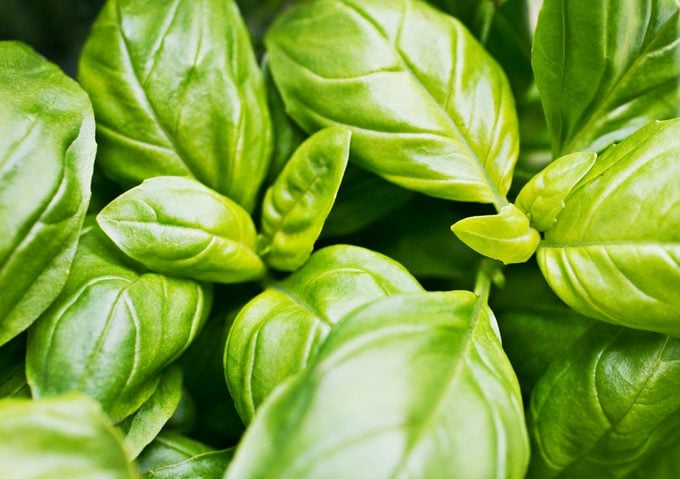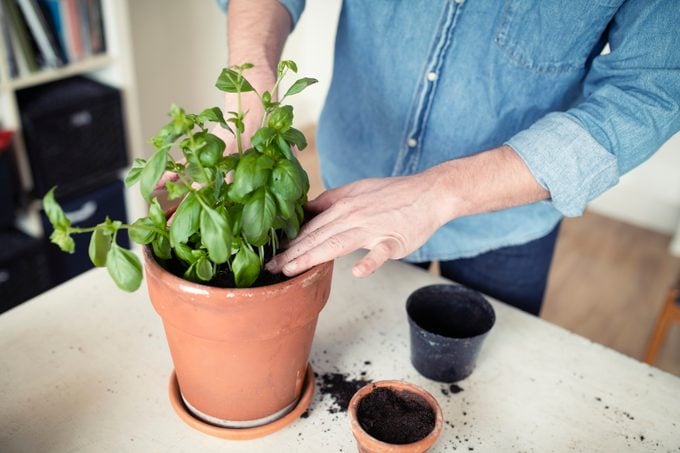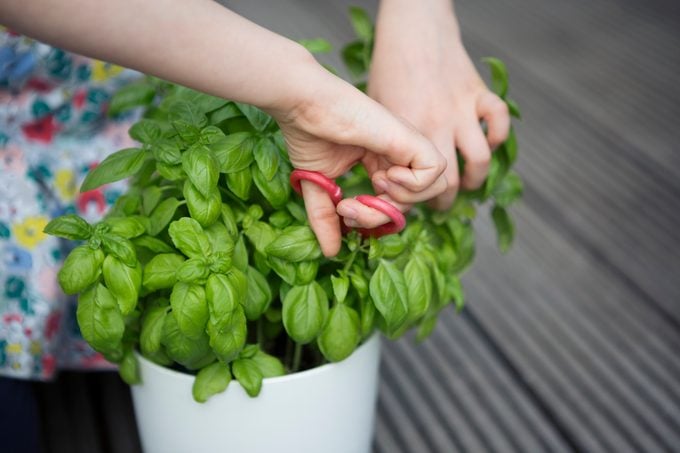7 Tips to Grow Your Best Basil Ever
Updated: Apr. 20, 2022
Basil is one a most popular culinary herb, thanks to its spicy-sweet leaves, but it can be tricky to grow. Check out our best basil tips.
Our editors and experts handpick every product we feature. We may earn a commission from your purchases.

Basil is one of the most popular culinary herbs around, thanks to its spicy-sweet leaves and the way it adds a flavorful zing to pastas, sandwiches and sauces. But this leafy herb can be tricky to grow. It needs plenty of sunshine, well-draining soil and regular harvesting in order to thrive. Follow these seven basil tips for garden success.
1. Grow What You Need
Before you fill your garden beds with basil, think about how you’re planning to use it. If you just want some fresh basil on hand when you need it, two to three plants should be enough. Home cooks who want to whip up flavorful pesto or dry leaves for winter pastas, sauces, soups and stews will need to grow at least six to eight plants.
2. Start With Seeds or Established Plants

More-experienced green thumbs may wish to grow basil from seed. Sow the seeds indoors in a sunny windowsill or under grow lights six to eight weeks before the last expected spring frost. Basil can also be purchased as seedlings from a local nursery and planted in garden beds and containers, or direct sow seeds after the last frost.
3. Give Basil Lots of Light
Basil needs plenty of sunshine for healthy growth. In northern regions, look for a location with at least eight to 10 hours of full sun. In southern areas where summer temperatures soar, basil can be planted in beds or containers that offer afternoon shade. Here’s how to create a windowsill herb garden.
4. Keep Basil Warm
A common mistake when growing basil is planting it outdoors too early. Be patient and keep seedlings indoors until the weather is reliably over 60 degrees. If an unexpected spring cold snap or frost threatens, protect plants with a floating row cover or old bedsheet.
5. Basil Watering Tips
Overwatering is the fastest way to kill basil. It appreciates regular moisture, but roots rot if they are sitting in water, so reach for the watering can only when the soil is dry. Regarding basil tips for containers, use a high-quality, well-draining potting soil to ensure good drainage.
6. Harvest Basil Often

Regular basil-harvesting encourages fresh growth. To harvest, snip leaves or stems as needed, clipping them back to stimulate growth. Pinch flower buds as they appear to prevent the plant switching from leaf to seed production.
7. Try Different Varieties of Basil
It’s fun to experiment with growing (and taste-testing) different basil varieties in your garden. Thai basil offers an intense licorice kick to salads and curries. Lemon basil has a bright citrus flavor that’s delicious in marinades and teas. Another favorite is cinnamon basil, which has fragrant leaves infused with the spicy scent of cinnamon.
3 Basil Favorites to Try This Year
Dolce Fresca is an All-America Selections award winner that produces compact, 15-inch-tall plants with dense growth and flavorful leaves. Perfect for pots or gardens, it makes wonderful pesto.
Pesto Perpetuo is an unusual basil with small white-and-green variegated leaves and a tall, narrow form. This plant doesn’t produce flowers but instead continues to pump out fresh foliage until the first frost.
Nufar is an outstanding cultivar of sweet basil with large, bright green leaves packed with classic flavor. The plants grow up to 2 feet tall and are resistant to Fusarium wilt, a common basil disease.





















